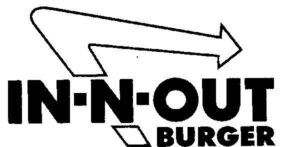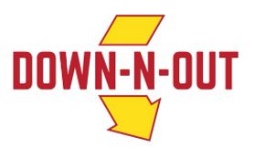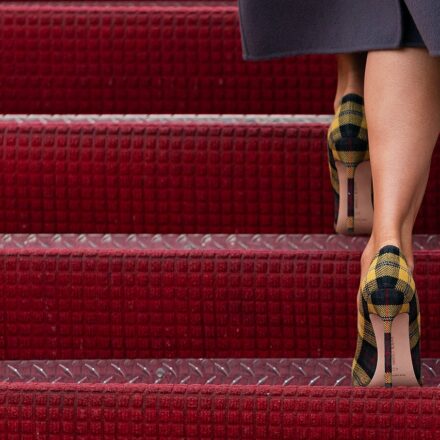Since our breakdown in March 2020 of Justice Katzmann’s ruling in the Federal Court in favour of American burger chain In-N-Out in its bitter trademark dispute with local Australian company Hashtag Burgers Pty Ltd of DOWN-N-OUT (now Plan B) notoriety, another round of this sizzling hot battle of the burgers has been fought before the Full Court.
Hashtag Burgers Pty Ltd (Hashtag Burgers) appealed Justice Katzmann’s ruling that it was liable for trade mark infringement, passing-off and misleading or deceptive conduct. In-N-Out Burgers, Inc (In-N-Out) cross-claimed, alleging that Justice Katzmann erred in not finding the directors of Hashtag Burgers liable as joint tortfeasors with the company for trade mark infringement and passing off.
In this article, we serve you up all the juicy details of the Full Court of the Federal Court decision on the appeal and cross-claim, and consider what the latest development in this case means for businesses feeling ‘inspired’ by another company’s branding, trade marks and reputation.
Lettuce recap
In-N-Out operates over 300 restaurants in the United States. Since 2012, it has hosted several pop-up restaurant events in Australia and owns a number of registered trade marks in the jurisdiction, including:
| Reg. No. | Trade mark | Priority date | Goods and services |
| 563986 |  |
23 September 1991 | Class 30: All products in class 30 including, hamburger sandwiches and cheeseburger sandwiches, hot coffee for consumption on or off the premises |
| 1345820 | IN-N-OUT BURGER | 16 February 2010 | Class 29: Meat, meat patties, burgers; french fried potatoes, potato chips; milk, milk shakes; spreads in this class; poultry; dairy desserts; preparations for sandwiches; potato products; prepared meals in this class, snack foods in this class
Class 30: Coffee, tea, cocoa, sugar, rice, tapioca, sago, artificial coffee; flour and preparations made from cereals, bread, pastry and confectionery, ices; honey, treacle; yeast, baking-powder; salt, mustard; vinegar, sauces (condiments); spices; ice; chocolate beverages; ice cream; pepper; spreads in this class; bread, buns; burgers contained in bread rolls; hamburger sandwiches and cheeseburger sandwiches; sandwiches; prepared meals in this class; snack foods in this class; beverages in this class; filled rolls Class 43: Services for providing food and drink restaurant services and carry-out restaurant catering services, mobile catering services. |
(the In-N-Out Marks).
In-N-Out’s fast food restaurants and events are branded with its iconic red and yellow get-up:
By way of quick summary, Benjamin Kagan and Andrew Saliba operated pop-up burger events in Sydney which utilised a logo ‘like in n out ‘burger’:
By June 2017, Messrs Kagan and Saliba had incorporated Hashtag Burgers as its sole directors and shareholders, and began operating several burger restaurants across New South Wales under the name ‘DOWN-N-OUT’ using the following signage:

Although In-N-Out had asked Messrs Kagan and Saliba to use a different name and logo to prevent confusion, Mr Kagan denied that Hashtag Burgers was trying to deceive customers, and began introducing a series of variations to the original logo with different punctuation (together with the original DOWN-N-OUT signage, the DOWN-N-OUT Marks):
Following some rounds of correspondence which did not yield any satisfactory outcome to In-N-Out, In-N-Out instituted proceedings in the Federal Court against Hashtag Burgers, and Messrs Kagan and Saliba, for:
- trade mark infringement;
- misleading or deceptive conduct under section 18 of the Australian Consumer Law; and
- passing off.
In the first instance, Justice Katzmann found in favour of In-N-Out , holding Messrs Kagan and Saliba jointly and severally liable for trade mark infringement, passing off and misleading or deceptive conduct prior to the incorporation of Hashtag Burgers, but holding only the company liable following its incorporation. This meant that neither Messrs Kagan nor Saliba were found to be personally liable for Hashtag Burgers’ conduct that was found to constitute trade mark infringement and passing off. However, Messrs Kagan and Saliba were found liable for misleading or deceptive conduct after Hashtag Burgers’ incorporation.
Hashtag Burgers mustard the strength for an appeal
Hashtag Burgers, Messrs Kagan and Saliba (the Appellants), seemingly hungry for a better outcome, launched an appeal before the Full Court. In-N-Out filed a cross-appeal contending that the primary judge had erred in finding that Messrs Kagan and Saliba were not liable as joint tortfeasors for the conduct that was found to constitute trade mark infringement and passing off.
The Full Court was careful to distinguish between findings of error and disagreements in evaluation. We consider each of the parties’ contentions in turn.
Trade mark infringement
The Appellants contended that Justice Katzmann erred in her evaluation that the DOWN-N-OUT Marks were deceptively similar to the In-N-Out Marks by:
a) failing to give weight to the presence of the word ‘BURGER’ in the In-N-Out Marks. The Appellants contended that the primary judge incorrectly recorded their concession that the word ‘BURGER’ should be afforded less weight in any assessment of deceptive similarity, and rather considered it to have no weight. The Full Court pointed out that Justice Katzmann did not treat the word ‘BURGER’ as absent, evidenced by her repeatedly referring to the whole ‘IN-N-OUT BURGER mark’ during her reasons, and in any event found it was open to her Honour to consider the word ‘BURGER’ to not be a ‘meaningful point of distinction’ in the marks.
b) failing to assess the effect of the arrows in the In-N-Out Mark. However, the Full Court found that Justice Katzmann had correctly recorded the concession that the relevant point of comparison was only between the word marks without consideration of the arrow – a concession that the Appellants had to be held to as it was part of the case they had run previously .
c) placing undue emphasis on the ‘N-OUT’ feature as a ‘distinctive and significant feature and an essential ingredient’ of the In-N-Out Marks. The Full Court did not accept this, noting Justice Katzmann had identified the ‘visual resemblance between the competing word marks’ but still considered the words ‘N-OUT’ to be a distinctive component of the ‘IN-N-OUT BURGER’ collocation. The Full Court agreed with her Honour’s assessment that ‘N-OUT’ was a key visual and aural feature of the In-N-Out Marks that the notional consumer would be likely to recall upon perceiving the DOWN-N-OUT Marks.
d) failing to give sufficient weight to the difference in the meaning and ideas the marks conveyed. The Appellants submitted that Justice Katzmann erred when assessing the words ‘IN-N-OUT’ as opposed to ‘DOWN-N-OUT’. The Appellants made reference to the expression ‘down and out’ having connotations of, for example, being knocked unconscious in the boxing ring, and the expression ‘down under’ having cultural and geographic connections to Australia. However, the Full Court considered these criticisms to pay insufficient regard to the rigour with which the primary judge approached her judgment. Although ‘some’ potential customers might consider ‘down’ to be used in a directional sense, Justice Katzmann gave this prospect little apparent weight, given some consumers with an imperfect recollection may not remember the first word of the In-N-Out Marks at all. The Full Court found no substance to the Appellants’ criticisms.
e) placing significant or dispositive weight on aural similarity and setting aside material visual differences between the marks. The Appellants contended that the asserted phonetic similarity has its source in only the ‘N-OUT’ component of the competing marks, and that the primary judge gave no work to the obvious difference between the words ‘DOWN’ and ‘IN’. The Full Court did not accept this submission, finding that it was plainly open to her Honour to come to the view she did, and seeing ‘no occasion to displace her Honour’s reasoning’ that the word ‘OUT’ at the end of the In-N-Out Marks, which also features in the DOWN-N-OUT Marks, attracted just as much emphasis as the word ‘IN’ at the beginning of the In-N-Out Marks.
f) framing the central question as one focussed on imperfect recollection. The Appellants contended that Justice Katzmann erred by framing the real question on deceptive similarity as being whether people with imperfect recollections of the In-N-Out Marks might be confused or deceived when coming across the Appellants’ marks. The Full Court found Justice Katzmann did not err by bearing in mind that the assessment of matters of visual impression, meaning or idea must be considered by having regard to the recollection, which may be imperfect, of the respective marks that a consumer is likely to take away.
g) placing apparent weight on evidence of confusion from social media posts and no weight on the absence of evidence of actual confusion. Justice Katzmann noted that it was difficult to put a great deal of weight on the evidence but found the evidence of the social media posts to ‘have some probative value’. It was apparent that the evidence did not play a significant role in her Honour’s evaluation. The Full Court considered this to be the correct approach.
The Full Court went on to reject the Appellants’ contention that Justice Katzmann had erred in finding they had deliberately appropriated the In-N-Out Marks, branding or reputation. In particular, the Full Court found her Honour had made a finding of fact that the Appellants selected the name ‘DOWN-N-OUT’ with ‘full knowledge’ of the In-N-Out Marks. This finding was open on the evidence, especially in light of evidence that Messrs Kagan and Saliba:
- knew of the ‘legendary’ In-N-Out;
- conceded the name DOWN-N-OUT was inspired by In-N-Out;
- accepted that the ‘N-OUT’ component was a direct lift from the In-N-Out Marks;
- used the words ‘IN-N-OUT’, not ‘DOWN-N-OUT’, in their May 2016 media release;
- referred to the ‘Animal Style’ and ‘Protein Style’ trade marks owned by In-N-Out;
- endorsed a designer’s announcement that Messrs Kagan and Saliba were going to ‘bring IN-N-OUT down under’;
- adopted In-N-Out’s broad theme and style, including its iconic red and yellow get-up; and
- failed to offer a more innocent explanation.
In addition, Mr Kagan had attended the January 2016 pop-up event held by In-N-Out.
However, the Full Court agreed with Messrs Kagan and Saliba’s argument that Justice Katzmann erred in finding they had acted dishonestly. On 24 June 2016, Mr Kagan emailed In-N-Out denying he and Mr Saliba had ever used the ‘Animal Style’ and ‘Protein Style’ trade marks as menu items. Justice Katzmann said this denial was knowingly false. However, the Full Court found that the evidence did not support her Honour’s conclusion.
While the Appellants had always promoted their menu using the term ‘Animal Style’, this was somewhat qualified by a May 2016 media release which referred to ‘secret menu hacks such as Animal Style and Protein Style’. This suggested the menu item names would be similar in style to the In-N-Out menu item styles, but it did not provide conclusive evidence the same names would be used. In any case, Mr Kagan’s denial was tenuous proof that the earlier adoption of the DOWN-N-OUT Marks was done deliberately and dishonestly for the purpose of appropriating aspects of the In-N-Out Marks.
Furthermore, contrary to Justice Katzmann’s judgment, the Full Court said the Appellants’ failure to produce relevant documents during discovery did not ‘rationally bear on the intention of Messrs Kagan and Saliba when they chose the DOWN-N-OUT name and logos’.
Nonetheless, this finding did not vitiate her Honour’s conclusions as to intention or deceptive similarity because these conclusions did not require any proof of actual dishonesty. Therefore, neither of the Appellants’ grounds of appeal in relation to trade mark infringement were made out.
Misleading or deceptive conduct
The Appellants contended the DOWN-N-OUT Marks were not likely to mislead or deceive consumers. This ground of appeal was rejected for the same reasons that the Full Court rejected the appeal with respect to trade mark infringement.
Hashtag Burgers also asserted its ‘trade dress, get-up, uniforms, décor, menus and other trade indicia’ dispelled any real risk customers could be deceived into thinking DOWN-N-OUT was affiliated with In-N-Out. However, the Full Court agreed with Justice Katzmann that the test as to whether conduct is misleading or deceptive is ‘if it leads or is capable of leading a not insignificant number of people into error’. Justice Katzmann found that a not insignificant number of Australians would have merely heard of In-N-Out but would not have recognised its ‘distinctive branding features’. This finding was not challenged on appeal, rendering DOWN-N-OUT’s trade dress and other trade indicia irrelevant to the question of whether Hashtag Burgers’ conduct was misleading or deceptive.
Hashtag Burgers then contended that Justice Katzmann had incorrectly applied the measure of ‘imperfect recollection’ to lower the threshold necessary to establish misleading or deceptive conduct such that it was sufficient if a consumer was ’caused to wonder’ whether there was an association between DOWN-N-OUT and In-N-Out. However, the Full Court found that Justice Katzmann was entitled to consider how consumers may remember the marks when determining whether DOWN-N-OUT’s conduct was misleading or deceptive. Furthermore, her Honour ultimately concluded the Appellants’ conduct was likely to be misleading or deceptive not on the basis of any ’caused to wonder test’, but rather because the conduct would cause a not insignificant number of consumers to think that DOWN-N-OUT was associated with In-N-Out.
Passing off
Finally, the Appellants argued that In-N-Out’s claim for the tort of passing off could not be made out because In-N-Out did not have local business or trade in Australia and therefore did not have a reputation sufficient in the country to support its claim. Mr Lancaster SC, who acted for the Appellants, even admitted in oral submissions that this ground of appeal was raised ‘more in hope than expectation’, so it is unsurprising it was dismissed. The Full Court reaffirmed the principle in ConAgra Inc v McCain Foods (Aust) Pty Ltd [1992] 33 FCR 302 that ‘it is not necessary for a claimant to have local business or trade in Australia to prove that it has a reputation sufficient to establish the tort of passing off’.
In-N-Out still on a roll
In its cross-appeal, In-N-Out contended Messrs Kagan and Saliba should have been held liable as joint tortfeasors for Hashtag Burgers’ conduct that was found to constitute trade mark infringement and passing off. The Full Court agreed with In-N-Out for five reasons:
- Messrs Kagan and Saliba were the sole directors of Hashtag Burgers;
- Messrs Kagan and Saliba alone made decisions as to Hashtag Burgers’ management;
- Messrs Kagan and Saliba alone received the profits derived from Hashtag Burgers;
- there was no significant difference between the way Messrs Kagan and Saliba operated the business before and after Hashtag Burgers was incorporated; and
- Messrs Kagan and Saliba were knowingly involved in Hashtag Burgers’ wrongdoing.
Key takeaways
When handing down her Honour’s judgment in February 2020, Justice Katzmann posed the question: what is the line between inspiration and appropriation? The Full Court’s decision in December 2020 confirms that, by explicitly copying some of the most distinctive elements of another business’ trade marks, the Appellants crossed the line into appropriation sufficient to infringe In-N-Out’s registered trade marks and reputation-based rights.
The Full Court’s decision to allow In-N-Out’s cross-appeal also serves as a valuable reminder that directors are not necessarily immune from personal liability if they are knowingly involved in their company’s wrongdoing.
This article was prepared by Diana Liu with assistance from Morgan Lynch.
Featured image: Galeri ega, CC BY-SA 4.0, Wikimedia Commons.












